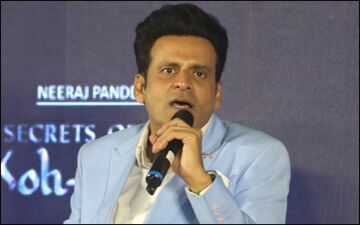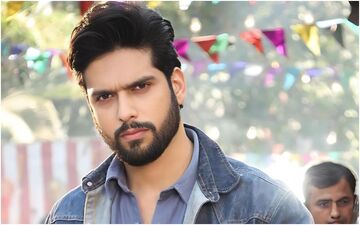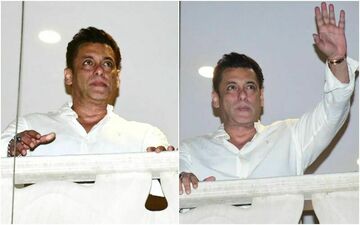Helen Mirren: Having Will Smith As A Co-Star Was The Reason Why I Chose This Film
Oscar winning actress Helen Mirren opens up about her upcoming film Collateral Beauty, her co-star Will Smith, personifying Death onscreen and recreating Christmas in New York
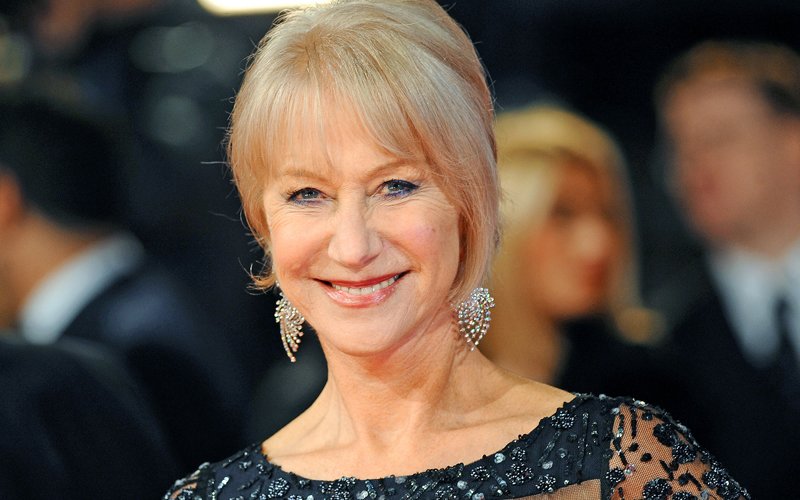
She is one of the most renowned actresses of Hollywood but Helen Mirren has always had a certain sense of humility as a person. The Academy Award winning actress is set to be back on the silver screen with Collateral Beauty this Friday. Before the release of the movie, SpotboyE.com got in touch with her and discussed the various aspects of the film.
Excerpts:
When you were first approached for Collateral Beauty, what drew you to the project?
Excerpts:
When you were first approached for Collateral Beauty, what drew you to the project?
It was definitely a combination of Allan Loeb’s script and the director, David Frankel. Knowing that you’re in the hands of a really clever director, who also directed one of my favorite movies, Marley & Me, is a huge advantage. Another draw was knowing that one of your co-stars is going to be Will Smith, who is a wonderful actor and a wonderful person. So, those are all major pluses, but it’s the script that leads you into a project.
I was very, very taken with this story and thought its fundamental message was quite beautiful. Collateral Beauty is a very life-affirming, optimistic film, in a way, and also something I could believe in: that in their darkest hours, in their most challenging times, people can find real beauty in their lives.
In the film, you play Brigitte, who embodies Death to engage with Will Smith’s character, Howard Inlet. How did you wrap your mind around playing the personification of such an abstract concept?
I remember when I was doing Antony And Cleopatra on stage, the director wanted Michael Gambon, who was playing Antony, and myself to do an improvisation. I was asked to play a lettuce leaf and he was asked to play a feather duster. So, actors enter into these kinds of situations quite often. It’s what we do. We engage in the world of imagination and try to bring it to the audience.
There’s such an interesting dynamic between your characters because Brigitte uses her sense of humor to try to break through to Howard, but he is just not having it. How was it playing these scenes with Will?
Well, Will approaches his work in a light way. He’s very communicative with everyone on the set, but, at the same time, he is capable of gravitas and seriousness. Obviously he’s playing a person in deep psychological pain. And he didn’t shy away from that, ever. Neither did he carry it on the set like a big, dark cloud over him. He’s capable of being utterly serious and playful at the same time.
You’re working with an incredible ensemble cast in this film, but the plots are spread out among different characters. You also share many scenes with Michael Peña. How was that experience?
In a way, we each had our own little movie within the movie, and my little movie within the movie was Brigitte’s relationship with Michael’s character, Simon. I was very lucky because Michael is extremely funny and very lively. He had to play against all of that because Simon is facing a huge challenge and must go on quite a dark journey. But the fact that Michael himself is so witty, funny, bright and a firecracker, gave piquancy to the way he played the role.
How did you find David Frankel as a director?
David really encouraged improvisation. Although I don’t like to categorize people, I will say David is very good at comedy. And I was quite surprised by how incredibly detailed and meticulous he was. David would really work at something until he felt it was right.
How did filming on location in New York add to the experience of making this film?
We were definitely helped by the fact that we were shooting on location in New York. I defy anyone not to find New York at Christmas a magical place—the lights, the shop windows and all the rest of it. But we weren’t shooting at Christmas, we were shooting at Easter, and we had to recreate New York at Christmastime.
It was funny because my husband (director Taylor Hackford) was shooting at the same time, and both he and David were praying for snow, but they were both just a little too late for snow (laughs).
Looking back on the production, was there a moment that was unexpected or particularly memorable?
I loved all the scenes in the theater. The idea of people sitting in the dark, looking at this light on the stage and being transported into another world, is magical. We had a wonderful theater set that was also magical, as well as strange and inexplicable.
Brigitte, as both herself and embodying this concept of Death, has such an interesting look. What were the decisions that went into her costumes?
David (costume designer), Leah Katznelson and I talked a lot about the costumes. One day, when we were just around the corner from where I stay in New York, which is in the East Village, David said, ‘I want Brigitte to look like she comes from around here.’ At that moment a woman with bright pink hair walked past us, and I said, ‘There’s Brigitte!’ But when we did costume and makeup fittings and I tried on a bright pink wig, we thought that was pushing the envelope a little too far (laughs).
For Brigitte’s impersonation of Death, we settled on the color blue. I didn’t want it to be black; it could not be black. She’s not a grim reaper.
I did an internet search for images of death—which were all ghastly. But one thing I did like was a bluebird, which in some cultures is an image of death. Blue is the color of the sky and the sea, and it has an eternal feel about it. It’s not depressing, but it’s not cheery. So a lot of thought went into that. Brigitte’s feathered scarf is a reflection of the bird image. So that was how we put that costume together.
Thumbnail Image Source: fullhdpictures
I was very, very taken with this story and thought its fundamental message was quite beautiful. Collateral Beauty is a very life-affirming, optimistic film, in a way, and also something I could believe in: that in their darkest hours, in their most challenging times, people can find real beauty in their lives.
In the film, you play Brigitte, who embodies Death to engage with Will Smith’s character, Howard Inlet. How did you wrap your mind around playing the personification of such an abstract concept?
I remember when I was doing Antony And Cleopatra on stage, the director wanted Michael Gambon, who was playing Antony, and myself to do an improvisation. I was asked to play a lettuce leaf and he was asked to play a feather duster. So, actors enter into these kinds of situations quite often. It’s what we do. We engage in the world of imagination and try to bring it to the audience.
There’s such an interesting dynamic between your characters because Brigitte uses her sense of humor to try to break through to Howard, but he is just not having it. How was it playing these scenes with Will?
Well, Will approaches his work in a light way. He’s very communicative with everyone on the set, but, at the same time, he is capable of gravitas and seriousness. Obviously he’s playing a person in deep psychological pain. And he didn’t shy away from that, ever. Neither did he carry it on the set like a big, dark cloud over him. He’s capable of being utterly serious and playful at the same time.
You’re working with an incredible ensemble cast in this film, but the plots are spread out among different characters. You also share many scenes with Michael Peña. How was that experience?
In a way, we each had our own little movie within the movie, and my little movie within the movie was Brigitte’s relationship with Michael’s character, Simon. I was very lucky because Michael is extremely funny and very lively. He had to play against all of that because Simon is facing a huge challenge and must go on quite a dark journey. But the fact that Michael himself is so witty, funny, bright and a firecracker, gave piquancy to the way he played the role.
How did you find David Frankel as a director?
David really encouraged improvisation. Although I don’t like to categorize people, I will say David is very good at comedy. And I was quite surprised by how incredibly detailed and meticulous he was. David would really work at something until he felt it was right.
How did filming on location in New York add to the experience of making this film?
We were definitely helped by the fact that we were shooting on location in New York. I defy anyone not to find New York at Christmas a magical place—the lights, the shop windows and all the rest of it. But we weren’t shooting at Christmas, we were shooting at Easter, and we had to recreate New York at Christmastime.
It was funny because my husband (director Taylor Hackford) was shooting at the same time, and both he and David were praying for snow, but they were both just a little too late for snow (laughs).
Looking back on the production, was there a moment that was unexpected or particularly memorable?
I loved all the scenes in the theater. The idea of people sitting in the dark, looking at this light on the stage and being transported into another world, is magical. We had a wonderful theater set that was also magical, as well as strange and inexplicable.
Brigitte, as both herself and embodying this concept of Death, has such an interesting look. What were the decisions that went into her costumes?
David (costume designer), Leah Katznelson and I talked a lot about the costumes. One day, when we were just around the corner from where I stay in New York, which is in the East Village, David said, ‘I want Brigitte to look like she comes from around here.’ At that moment a woman with bright pink hair walked past us, and I said, ‘There’s Brigitte!’ But when we did costume and makeup fittings and I tried on a bright pink wig, we thought that was pushing the envelope a little too far (laughs).
For Brigitte’s impersonation of Death, we settled on the color blue. I didn’t want it to be black; it could not be black. She’s not a grim reaper.
I did an internet search for images of death—which were all ghastly. But one thing I did like was a bluebird, which in some cultures is an image of death. Blue is the color of the sky and the sea, and it has an eternal feel about it. It’s not depressing, but it’s not cheery. So a lot of thought went into that. Brigitte’s feathered scarf is a reflection of the bird image. So that was how we put that costume together.
Thumbnail Image Source: fullhdpictures
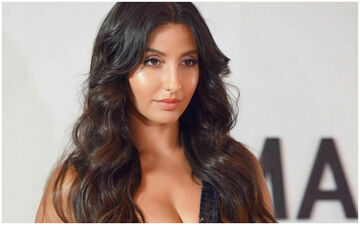
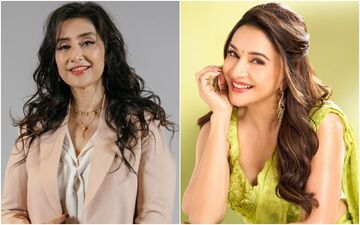
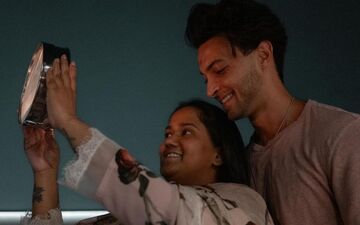
_2023-9-7-10-9-18_thumbnail_2024-4-23-6-24-14_small.jpg)
